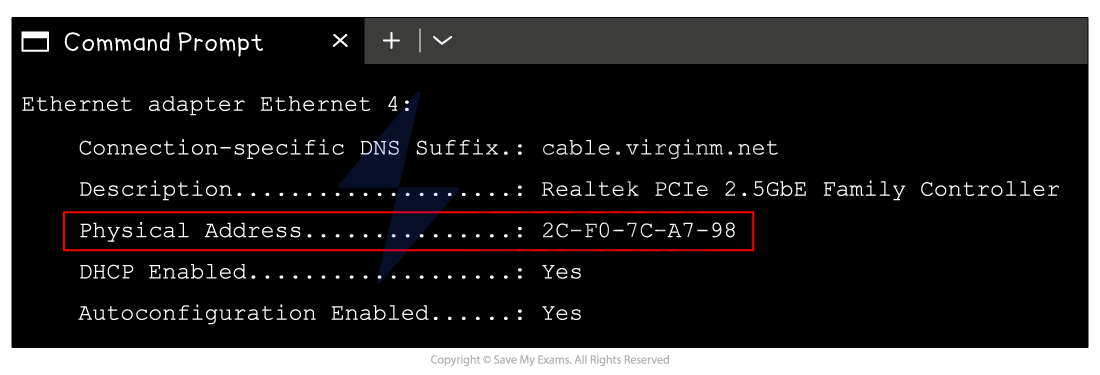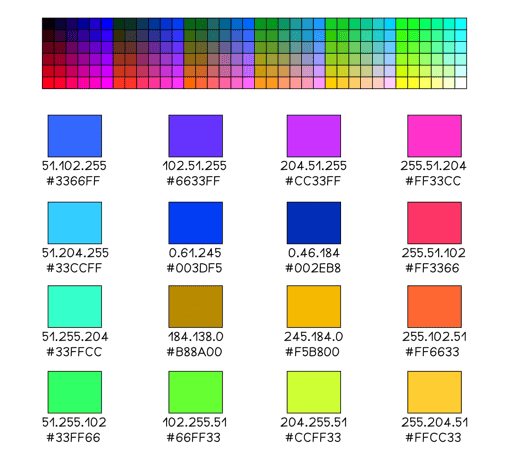Denary to Hexadecimal Conversion
What is hexadecimal?
- Hexadecimal is a number system that is made up of 16 digits, 10 numbers (0-9) and 6 letters (A-F)
| 0 | 1 | 2 | 3 | 4 | 5 | 6 | 7 | 8 | 9 | 10 | 11 | 12 | 13 | 14 | 15 |
| 0 | 1 | 2 | 3 | 4 | 5 | 6 | 7 | 8 | 9 | A | B | C | D | E | F |
- Hexadecimal is referred to as a Base-16 number system
- Each digit has a weight factor of 16 raised to a power, the rightmost digit is 1s (16^0), the next digit to the left 16s (16^1)
- In GCSE you are required to work with up to and including 2 digit hexadecimal values
| 16s | 1s | |
| 1 | 3 | |
| 1 x16 | 3 x 1 | = 19 |
- A quick comparison table demonstrates a relationship between hexadecimal and a binary nibble
- One hexadecimal digit can represent four bits of binary data
| Denary | Binary | Hexadecimal |
| 0 | 0000 | 0 |
| 1 | 0001 | 1 |
| 2 | 0010 | 2 |
| 3 | 0011 | 3 |
| 4 | 0100 | 4 |
| 5 | 0101 | 5 |
| 6 | 0110 | 6 |
| 7 | 0111 | 7 |
| 8 | 1000 | 8 |
| 9 | 1001 | 9 |
| 10 | 1010 | A |
| 11 | 1011 | B |
| 12 | 1100 | C |
| 13 | 1101 | D |
| 14 | 1110 | E |
| 15 | 1111 | F |
Exam Tip
A common exam mistake is mixing up which letter matches with what number, write out the 16 hexadecimal digits at the start of the exam!
Why is hexadecimal used?
- In Computer Science hexadecimal is often preferred when working with large values
- It takes fewer digits to represent a given value in hexadecimal than in binary
- It is beneficial to use hexadecimal over binary because:
- The more bits there are in a binary number, the harder it is to read
- Numbers with more bits are more prone to errors when being copied
- Examples of where hexadecimal can be seen:
- MAC addresses

-
- Colour values

How do you convert denary to hexadecimal?
Method 1 (denary to binary to hexadecimal)
- To convert the denary number 28 to hexadecimal, start by converting the denary number to binary
| 128 | 64 | 32 | 16 | 8 | 4 | 2 | 1 |
| 0 | 0 | 0 | 1 | 1 | 1 | 0 | 0 |
- Split the 8 bit binary number into two nibbles as shown below
| 8 | 4 | 2 | 1 | 8 | 4 | 2 | 1 | |
| 0 | 0 | 0 | 1 | 1 | 1 | 0 | 0 |
- Convert each nibble to its denary value
- 0001 = 1 and 1100 = 12
- Using the comparison table, the denary value 1 is also 1 in hexadecimal whereas denary value 12 is represented in hexadecimal as C
- Denary 28 is 1C in hexadecimal
Method 2 (divide by 16)
- To convert the denary number 163 to hexadecimal, start by dividing the denary value by 16 and recording the whole times the number goes in and the remainder
- 163 ➗16 = 10 remainder 3
- In hexadecimal the whole number = digit 1 and the remainder = digit 2
- Digit 1 = 10 (A)
- Digit 2 = 3
- Denary 163 is A3 in hexadecimal

